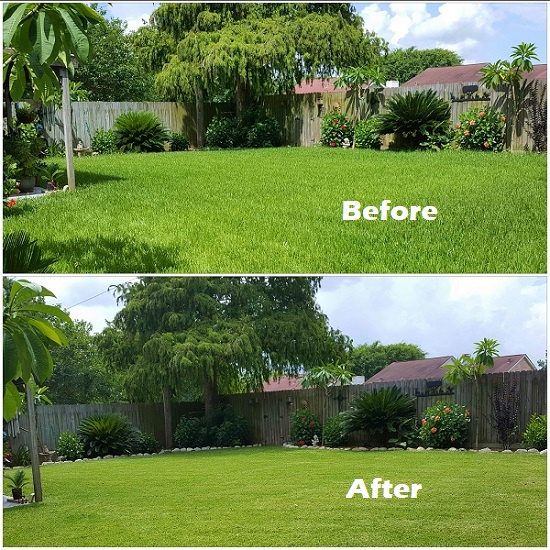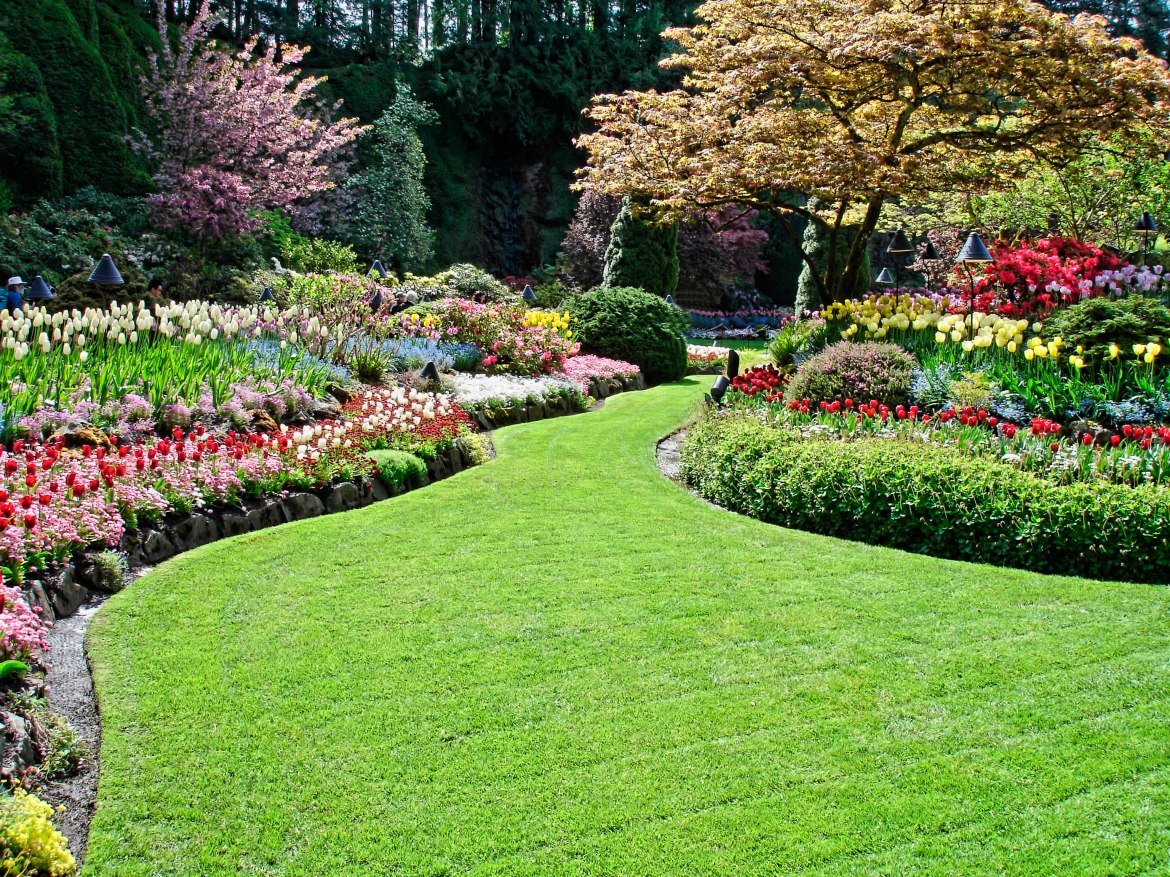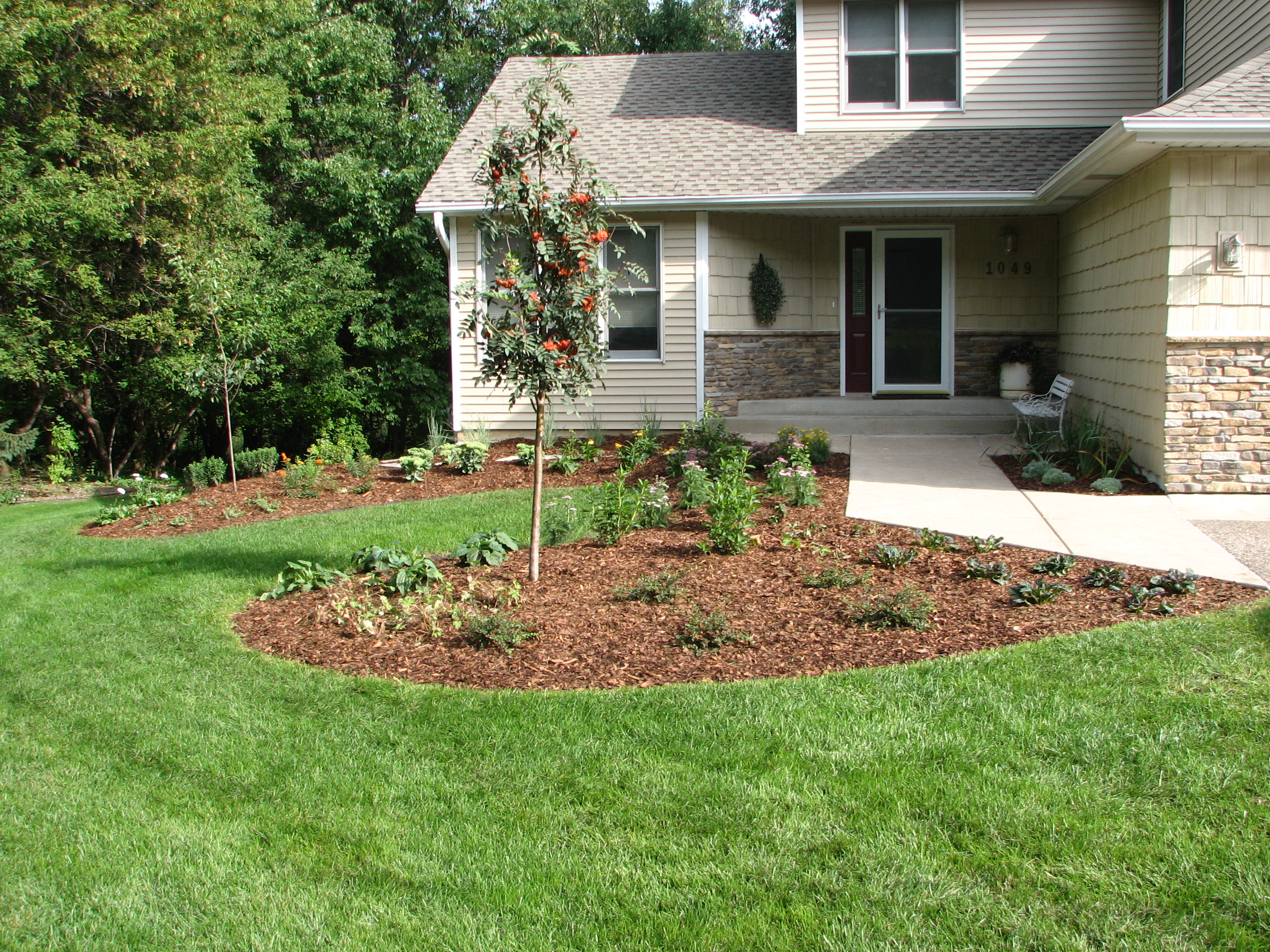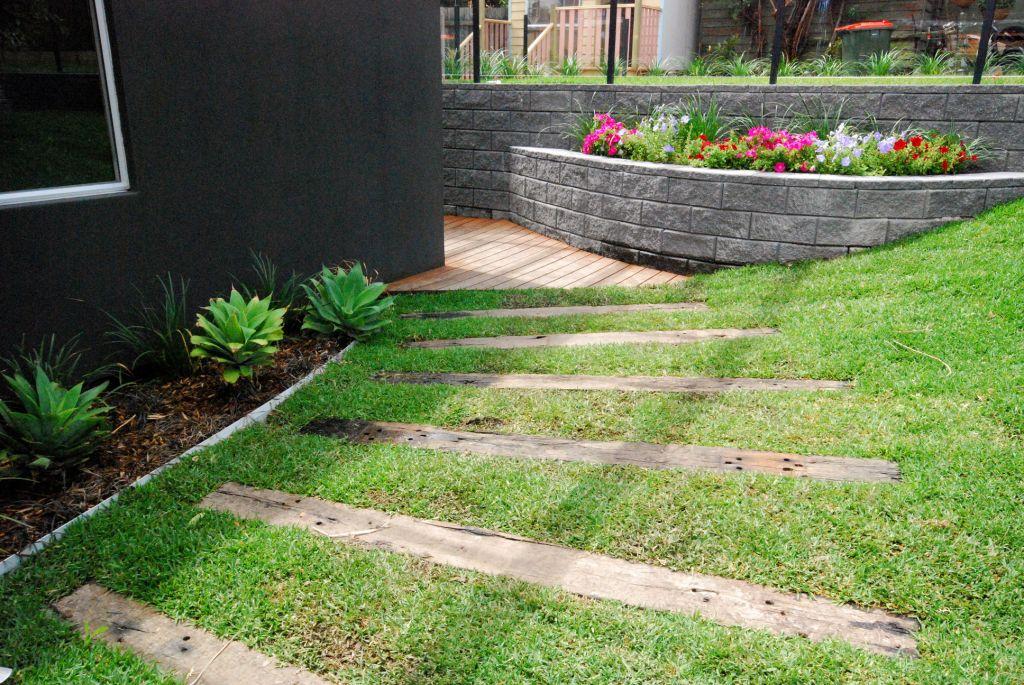Lawn Care Tulsa
There are a lot of colors in the world. All the colors are essential to make the life colorful because all the colors are very beautiful. By these colors, you not only make your life beautiful but also can make the life of other people beautiful. Colors give happiness. You can spread happiness everywhere because of these colors. Sometimes, when your mood is off and you do not want to talk to any person, by seeing different colors and colorful things, you can make yourself happy. You can see these colors in your home, in your lawn and in your nearby park etc. In the lawn and parks, we see the green color most because there is a lot of plants and trees which are in green color and also the grass of your lawn is in green color. But to make the lawn beautiful and to maintain its beauty and original colors of plants, you have to take a great care of your lawn. All the people cannot take care of their lawn themselves because of lack of time, lack of interest or the lack of knowledge. They do not need to be worried about this because Walter's Lawn Services is always there to help you.

Lawn Care Tulsa can help you in different ways to maintain the beauty and elegance of your lawn. We can provide you the services of weekly lawn maintenance and small landscaping projects. In weekly lawn maintenance, you can get services of mowing, trimming, edging and blowing of hard surfaces. Lawn care Tulsa is the best care center from where you can get best lawn care. This is just because of our uniformed and skillful staff. Our team firstly checks your lawn, measure the areas on which they have to do work and then make a proper plan. After proper planning, they start working because planning helps them to complete their project as soon as possible. All these steps are the secrets of their success. Our professionals work according to the expectations of our customers. That's why they are much satisfied by our brand. By getting our useful lawn care Tulsa services, you can make your property a valuable property. You can also get different suggestions and information from us about your lawn without any hesitation. You can do this by checking our websites. You can also check our gallery to choose the designs for your lawn.
Do You Need to Lime the Lawn
Like most things in nature, the soil supporting your lawn (technically called turfgrass) must be in balance. In this case, the balance is a measure of pH or acidity. If your soil is too low on the pH scale, adding lime can help restore the balance and promote a Tulsa Lawn Care. A quick understanding of the basics of pH, how to test your soil and when and how to apply lime are all you need to get started.
Why Use Lime?
Adding lime is the most common method of changing pH of the soil. Soil pH is a measure of a soil alkalinity or acidity. A pH of 7.0 is neutral. Anything below 7.0 is acidic, and anything above is alkaline. Most Lawn Care Tulsa grow best with a pH of 5.5 to 6.5. If a soil tests lower than 5.5, it likely will benefit from added lime.
Soils can be naturally acidic but can also be acidified over time by natural leaching, the use of some nitrogen fertilizers, excessive rainfall or irrigation, and acidic water sources. Low pH affects microbial activity in soil, making nutrients less available to grass and other plants. As a result, turf declines. Common symptoms of low pH include loss of color, reduced vigor and diminished ability to recover from heat and drought stress.
Types of Lime
The lime you apply to a lawn is limestone or chalk. The main component is calcium carbonate. There are several types of lime, and a good soil test should tell you which type of lime you need.
Lime with a high calcium content is referred to as calcitic lime and has the benefit of adding calcium to the soil. Some limestone contains a significant amount of magnesium and is referred to as dolomitic lime. Dolomitic lime adds magnesium to the soil and could be used if soil tests indicate a magnesium deficiency.
Most types of lime can be applied with a standard lawn spreader.

How to Test Your Soil
You can buy DIY soil test kits at Tulsa Lawn Service. A good kit costs about $15 to $20 and tests for pH as well as nutrients, such as nitrogen and phosphorus. The accuracy of the results is difficult to predict, and the information may not tell you how much lime your lawn needs. For the same amount of money (and a little more time, perhaps 2 to 3 weeks), you can have your soil tested at a local extension service. Most university extensions test soil for about $10 to $20 and usually offer a much more detailed analysis of your soil's composition and pH level.
Follow the extension's instructions for gathering the soil sample. It's usually best to gather multiple samples from each large lawn area and mix the samples for each area together before bagging it for testing. Be sure to let the tester know that you want to learn about liming your lawn Care. They will likely perform an SMP buffer test on your sample(s) to indicate how much lime to add.
When to Apply Lime
Lime can be applied to a lawn any time of year that soil isn't frozen, but it is typically done during spring or fall. It's best to apply lime after aerating the Arrow Landscaping.
This aids absorption and allows some of the lime to reach deeper into the soil.
How to Store Your Lawn Mower for the Cold Season
Gas-powered lawn mowers and trimmers take their share of abuse during the warm months, so some care at the end of the season—or at the start of spring—is vital to keeping their parts in good working condition. Replacing the oil, spark plugs, and air filters on mowers and applying a bit of elbow grease to grimy recesses, preferably before storing them for the winter, will ensure that they rev up with a pull of the cord next year.
1- Empty the gas tank
5 Landscape and Lawn Care Trends to Pay Attention to in 2018
Heading into the new year is always a great time to take stock of where you are and where you want to be. If you’re a homeowner or commercial property manager, one aspect of your life you’re likely to consider is how your property looks and whether or not that matches the image you want people to see.
If that strikes a chord with you, you’ll want to take just a few moments to learn about the following lawn care and landscaping trends that are going to be popular in 2018. Maybe there’s an idea or two in this list that can inspire your next outdoor project!

1. Meditation gardens
What used to be a practice exclusive to the far east is now routinely recommended by the local Landscaping Tulsa: meditation as a form of stress relief and relaxation. With studies proving the power of meditation to reduce stress, improve mood, and promote general well being, it’s no wonder millions of homeowners are looking into turning a portion of their property into a permanent retreat where they can go to practice mindfulness.
These beautiful oases from the hubbub of modern life can be as simple as a small fenced area with Fertilization and a water element, or as complex and otherworldly as your imagination can conceive. The only rules are: no electronics, and use your indoor voice.
2. Extending the inside out
Many homeowners are seeking a more seamless transition from their inner to their outer sanctuaries, and builders or Tulsa Lawn professionals re delivering the goods with indoor/outdoor flooring that looks and functions equally well in both locations.
Various types of natural stone, tile, and concrete can work well for these kinds of transitional spaces. Combined with French doors and a well-designed patio or deck area, these simple, functional flooring choices can greatly expand the look and feel of your living space.
3. More color and more variety
While minimalism and simplicity have been trendy for years now — and they certainly still have their place — many homeowners and property managers alike are enjoying the vibrant beauty of a lush landscape bursting with a variety of trees, bushes, and flowering shrubs.
The key, in most cases, is wise selection of plants based on the level of maintenance you’re willing and able to provide. If you can’t commit to a significant weekly workload, your best bet is to identify the lowest maintenance plants that thrive best in your region and fill empty spaces with plenty of those. Of course, hiring a Tulsa Lawn Care service can open up your options, so don’t give up on higher-maintenance plants right off the bat.
4. Fountains and waterfalls
While water elements like waterfalls and fountains have been a beloved addition to outdoor spaces for centuries, they’ve become especially popular on the commercial side in recent years. This trend is likely to continue through 2018.
The real value of fountains in retail spaces or outside your commercial building’s entrance is the effect they can have on customers and employees alike: running water just naturally relaxes the body and soothes the mind. It also provides a comfortable source of low key white noise that can drown out harsher sounds like traffic or the crying of cranky toddlers who don’t want to be out shopping anymore.
Combined with judiciously chosen greenery and well-maintained walkways, a water element can do wonders for the look and feel of your commercial property.
5. A well-manicured lawn
A classic that never goes out of style. It doesn’t matter if your property is huge or tiny, if the lawn is artfully cared for, or just fills the space between the road and your door… if it’s neat, clean, and green, then it’s guaranteed to be a trendy Arrow Lawn Care in 2018 and beyond.
5 Good Reasons Why Fall Lawn Care Might Include Compost
Remember when you last ordered a soil test for the lawn? If it showed that organic matter was low or medium (less than four to five percent), your lawn’s future may be less than optimal. Healthy lawn soil has between five to eight percent organic matter.
Compost applications can improve the level of organic matter in soil. The usual recommendation is to apply one-half inch. (Want to know how many yards of compost you need?
Compost can be applied spring or fall, but fall is usually the best time for the lawn care. Here are five reasons why:
- Fall and winter weather work the compost into soil passively, especially in rainy or snowy climates. It’s less work for you and less soil disturbance. If you recently aerated the Lawn Service Broken Arrow OK (another good fall practice), compost is absorbed faster. Many turf pros aerate after applying compost.
- Fall compost applications help decompose thatch, the dead grass roots that accumulate on the soil surface during the growing season.
- Compost provides food for beneficial soil microbes that may remain active well past the apparent end of the growing season. Fall-applied compost also nourishes soil microbes in early spring as they become active.
- Fall-applied compost can help overcome soil compaction, one of the top deterrents to a successful lawn. How do you know if soil is compacted? If you can’t sink a shovel deeper than three inches, the soil is likely to be too dense for healthy lawn growth. If water puddles in a section, the soil is probably compact.
Spring-applied compost has some drawbacks. One is that it can be an invitation for grubs. Because the freshly placed compost is likely to hold moisture, it can attract female beetles during the egg-laying period. Female beetles, particularly Walter Arrow beetles, prefer to lay eggs on moist areas.

How to Buy Compost
- If you are making a bulk purchase from a local Lawn are Tulsa provider, you might look for one who uses the US Composting Council’s Seal of Testing Assurance (STA).
- Learn more about the how to buy good compost at USCC’s Buy Compost. Find a list of STA participants by state.
- Use finished compost that has been properly heated and turned for a sufficient period of time. Avoid compost that uses old building materials.
- If any of the compost inputs are animal-derived, such as manure, blood meal, bone meal or feathers, the compost should be sufficiently aged. In organic farming, the recommendation is usually six months or more.
- Municipal sewage compost, while widely available, is not considered compatible with organic land care and food production standards.
Test Compost for Finish
If you are making your own compost, here are two D-I-Y tests for finish:
- Put three cups of compost in a sealed plastic bag. Let it stand overnight at room temperature. If the bag has expanded when you check in the morning, the compost is unfinished. Turn the pile and test again in a few weeks.
- Here’s another test for finish: Fill a planting pot with the compost and try to germinate watercress seeds. If there is no germination or the seedlings are very weak, the compost needs further work.
Test Compost for Herbicides
According to the Arrow Walter Compost from grass clippings or cow manure can have persistent herbicides.
Most professionals test for this, but here’s a D-I-Y test for persistent herbicides in compost:
- Fill a pot with the compost. Add seeds of red clover (Trifolium pratense) or use regular garden beans. Failure to grow is a good indicator of persistent herbicides.
The fall season is a great time to improve lawn soil by applying compost.
How to Prepare Your Lawn for Winter
Before we get started, there is another excellent article in our archives on preparing your lawn and landscape for the chilly seasons. Fall Arrow Lawn Care, these tips includes practical advice such as making sure the leaves are all raked up and the need for late fall lawn service and fertilization.
Pre-Winter Lawn Mowing
The most important tip is the need to mow your lawn short for the winter, especially in the northern areas of the country. If the grass is left too long, it will lay over on itself from the pressure of the snow cover. Air circulation around the plant is reduced, and Snow Mold, a destructive early spring lawn disease, can become a problem in your lawn. It can cause large areas of grass to die, or at least weaken in vigor.
Spring green-up and grass growing may also be slow. Often the grass blades will turn brown during the winter. This is a normal response to the cold weather of winter. The grass plant will need to grow an entirely new plant, from the crown up by the best Arrow Lawn you can get the maximum results, the next spring. If there is a lot of brown grass left from the previous year, it will take a long time for the old plants to fall away and allow the new plants to show through.

Other Winter Lawn Maintenance Tips
There are several other late fall, early winter jobs that need attention. If you have any perennial plants that have gone dormant, cut back the brown tops. If the tops are still green, wait until they turn yellow or brown before cutting. There is still energy being transferred to the root system from the top growth. Depending upon the amount of snow cover your area receives, you may have to wait until spring to complete this yard care task.
Lawn Furniture Tips
Outdoor furniture should be covered or brought indoors. Clay pots and other outdoor statuary should be brought indoors to keep from breaking. Alternating freezing and thawing of these items could cause them to crack. If they are too large to move, cover them with a plastic tarp.
Winter Mower Maintenance
Your Tulsa Lawn Service needs attention at the end of the mowing season. Drain the gas tank or add a few drops of a stabilizing agent to the tank to keep the gas from getting ‘old’. It is also a good time to change the oil, clean the underside of the deck, sharpen the blade, and replace the spark plug and air cleaner. Be sure to disconnect the spark plug wire before attempting any repair on your mower, regardless of the time of year the maintenance or repair work is performed. Check out more tips to winterize your lawn, landscape and equipment.
Snow Clearing
If you are in an area that receives significant snow fall, many of your plants could be damaged from excess accumulation of snow on the branches. This is especially true of evergreen trees, such as Arbor Vitae. Carefully and gently, brush the snow in an upward direction off the limbs and boughs. If they become coated with ice, leave them alone. Trying to break off the ice could damage the tree or shrub, and won’t help much with your tree maintenance. The ice normally melts at a rapid pace, even if the temperatures are below freezing.
Finally, put out a bird feeder or two for our feathered friends. There are many birdseed mixes available, so choose one that will attract the varieties of birds that are most common for your area. Just remember that your local Tulsa Lawn Care experts always ready to help you.
How to Make a Beautiful Lawn in Winter
Beautiful Winter Lawns
Having a great looking lawn in winter is often thought of as an impossibility for many people, yet as we drive around town we can’t help but notice that for many other lawn owners, the concept is merely a myth. The proof is seen in lush green carpets of lawn at a time when many other lawns are in a state of decline, lacking in color, bare patches and thinning out of the thatch layer.
So what’s the secret of Landscaping Tulsa, what are these miraculous gardeners doing in winter that we are not, that can produce results of such diversity?
Why Winter Is A Problem For Lawns
For most lawn owners in USA, we grow Warm Season Grasses for use as our lawns, which means in warmer weather, the grasses thrive, and as the weather cools, they go into a state of very slowed growth or in some cases, a state of semi-hibernation.
According to the Arrow Landscaping Without the rapid and regular growth associated with warmer weather, grasses will lose their dark green color, and will become slower to re-grow and repair damage. As the position of the sun changes in the sky and increases shade, and when combined with lower daylight hours and a reduction in direct sunlight and lower soil temperatures, lawns will generally be at their most vulnerable and unable to repair or maintain good health as well as they can in warmer times.

The Secret To A Beautiful Lawn In Winter
A beautiful lawn in Winter is created in Autumn, PRIOR to the onset of Winter.
That’s the secret! And it’s very simple.
Once Winter arrives, there is very little if anything much at all that can be done to bring a lawn to good health, or to maintain it there if the grass wasn’t already in maximum health prior to Winter arriving. Lawn Care Tulsa can give you a amazing lawn care services and make your lawn and garden very beautiful.
The Steps To Increasing Lawn Health In Autumn
Realize and be aware of the importance of the lead-up to Winter as being the only time to create a beautiful Winter lawn and act accordingly.
Increase Mowing Heights
As daylight hours decrease so does the ability of lawns to photosynthesis, by increasing mowing heights and leaving more green leaf we increase the food supply to the grass. This step is essential, and taking the mower up a notch or two should suffice.
Decrease Watering as Air and Soil Temperatures Decrease
Over watering at this time of year can increase the possibility of turf diseases or rotting of the thatch layer.
Treat Winter grass
If we had Winter grass last year, we’ll have it again this year too, and its continuing existence can choke the root system of our lawn throughout the year. According to the Tulsa Lawn Service the winter grass must be treated when it’s young, and the very best time to treat it is pre-emergent. That means knowing that Winter grass will soon emerge and killing it before it is even seen. Winter grass can be treated pre-emergent from May.
Fertilize Correctly
This means having a plan for fertilizing at the right times with the right fertilizers. Put down a high quality Arrow Lawn Winter Fertilizer in May prior to Winter arriving. The next application of Winter fertilizer should be in July, 8 weeks later. Apply to manufacturers recommendations. Winter fertilizers contain higher levels of Iron which is essential for good lawn health through Winter.
Kill Winter Weeds
Generally broad leaf weeds will become more prominent in Winter as conditions for their survival improve, and as the ability for the lawn to fight against them decreases, best to treat them as early as possible before they spread.
Pruning
Overgrown trees and bushes may increase their shade levels in Winter, and by the time we notice that our lawn has started dying in affected areas, it can be too late to repair the damage. So it’s best to plan ahead and prune trees and other bushes in Autumn.
